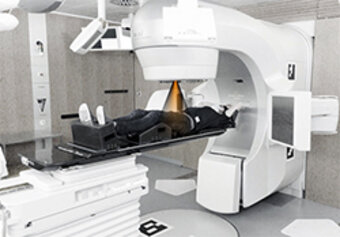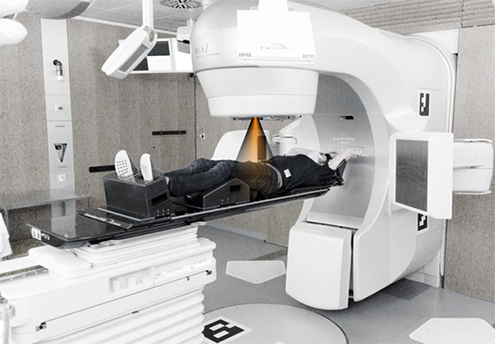- IMS Info Brochure (pdf)We Extend the Frontiers (pdf)Patient information (pdf)Second Opinion (pdf)Check ups (pdf)
Radiation Therapy for Prostate Cancer

The Prostate Cancer Working Group at the Department of Radiation Oncology at the Medical Center – University of Freiburg treats patients suffering from prostate cancer in all stages of the disease.
For several years, patients with newly diagnosed prostate cancer as well as patients with spread tumors (metastases) have been treated successfully.
For this purpose, the Department of Radiation Oncology (Medical Director: Prof. Dr. Anca-L. Grosu) uses the most modern techniques of high-precision radiation therapy: High Dose Rate (HDR) Brachytherapy, Stereotactic Radiation Therapy, Intensity-Modulated Radiation Therapy (IMRT), Image-guided radiation therapy (IGRT). These techniques enable precise irradiation of the tumor tissue and pronounced protection of the surrounding organs. In order to further expand this expertise, the Department of Radiation Oncology has founded the first independent Section for Interventional Radio-Oncology in Germany including the high dose rate (HDR) brachytherapy (Section Head: PD Dr. Constantinos Zamboglou). In addition, latest imaging methods such as PSMA positron emission tomography / computed tomography (PSMA PET / CT) and magnetic resonance tomography (MRT) are also used to ensure accurate detection of tumors. This technology allows a complete individualization of the radiation therapy, since the radiation dose can be directed specifically to the aggressive tumor areas (see image). Here, the Freiburg Clinic for Radiation Oncology leads the way in world-class research.
Patients with primary, non-metastatic prostate cancer in particular benefit from radiation therapy. The treatment has a high success rate that is comparable to surgery and sometimes even higher. Radiation therapy allows for a treatment that maintains continence and potency, which for many men is an important component in maintaining quality of life. In the case of metastases, "selective" radiation therapy can often eliminate the focus and replace or postpone the application of hormonal therapy. Treatments can be carried out on an outpatient or inpatient basis.
Parallel to expanding its clinical expertise, the Prostate Cancer Working Group at the Freiburg Department of Radiation Oncology is leading highly innovative, international research projects in order to be able to offer the latest scientific findings directly to patients. The work of Prof. Dr. Anca-L. Grosu and PD Dr. Constantinos Zamboglou was honored with several renowned research prizes in this field: Alfred Breit Prize of the German Society for Radiation Oncology (DEGRO) 2020 for Prof. A.-L. Grosu, and Hermann Holthusen Prize of DEGRO 2020 for Dr. C. Zamboglou.

The image shows an example of the setup for external irradiation of prostate cancer on the Varian TrueBeamSTX in the Department of Radiation Oncology. The non-invasive photon radiation from the accelerator head is visualized. To the side of this are an X-ray tube and a detector for image-guided therapy. The patient is in a supine position.

PSMA PET / CT imaging of newly diagnosed prostate cancer shown on the left. The glowing mass (bottom left) is the tumor mass in the prostate. This information is used for the targeted planning of radiation therapy (right picture). The tumor mass receives a higher radiation dose (red) and the rest of the prostate receives less radiation dose (yellow), which is much easier on the surrounding organs.